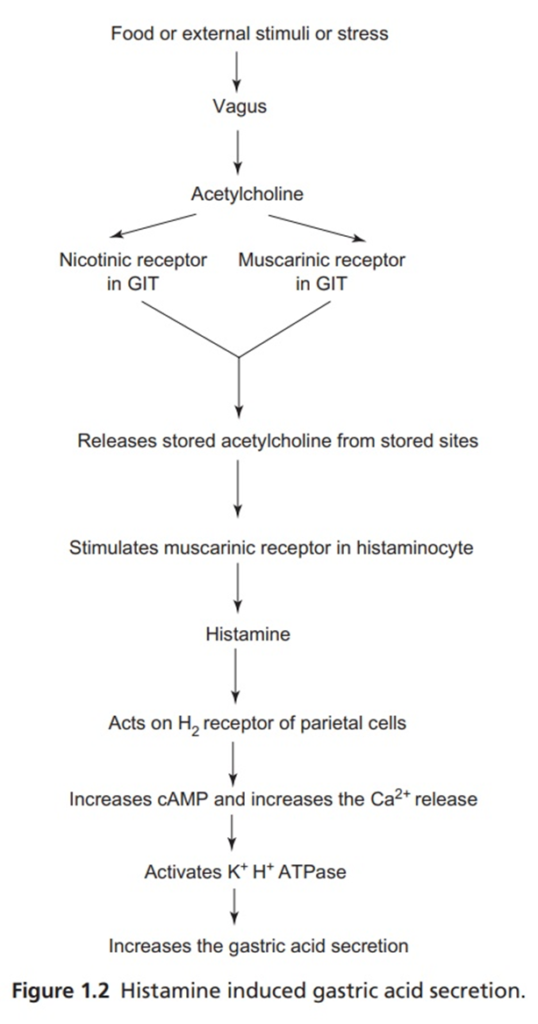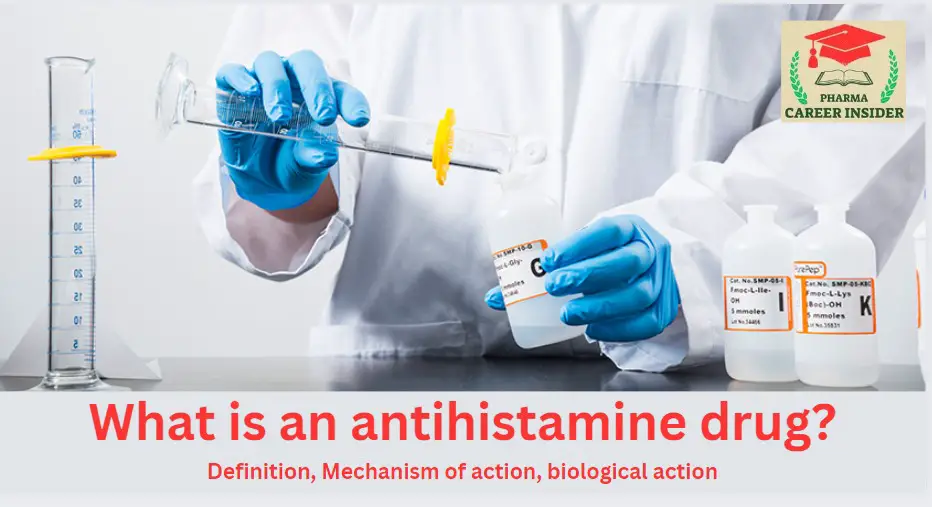INTRODUCTION
Histamine, [2-(imidazol-4-y1) ethylamine], which is biosynthesized by decarboxylation of the essential amino acid histidine, is found in all organs and tissues of the human body.
Reaction:

Histamine is stored within the secretory granules of mast cells, maintaining a pH of 5.5. It exists in a positively charged state and forms ionic complexes with the negatively charged acidic groups on other secretory granules, including heparin. The primary focus of immediate hypersensitivity reactions involves mast cells and basophils, where the generation of IgE antibodies occurs. These antibodies subsequently bind to the FC€ receptor located on the surface of granules, facilitating the hypersensitivity response. This leads to transmembrane activation of tyrosine protein kinase, which phosphorylates and activates the phospholipase. The calcium ion causes exocytic release of histamine with the transfer of Na+ ion from extracellular space. The released histamine targets the histaminergic receptors (H1, H2, and H3) to elicit the actions.
Biological function of Histamine:
The Biological Function of Histamine exerts its biological function by interacting with at least three distinctly specific receptors H1, H2, and H3. The term “antihistamine” has been employed to describe a drug that is acted upon by H1 and H2 receptors. An antihistaminic agent should ideally prevent the production or release of these autocoids by inhibiting the response of sensitized mast cells and basophils to specific antigens.
- Antihistamines are drugs that competitively block the H1 receptors.
- Antihistamines antagonize the stimulant action of histamine on the smooth muscles of the gastrointestinal tract (GIT), uterus, and blood vessels and inhibit histamine-augmented salivary secretion.
- H1-antagonists treat allergies like rhinitis and urticaria.
Release and Function of Endogenous Histamine
Histamine is released because of the interaction of an antigen with IgE antibodies on the mast cell surface. It plays a central role in immediate hypersensitive reactions (Fig. 1.1).

The release of histamine and the stimulation of IgE receptors also activate the phospholipase A2, producing host mediators, including platelet-activating factors and metabolites of arachidonic acid. Leukotriene D4 is also generated, a potent smooth muscle constrictor. This mediates the constriction of bronchi.
Histamine is a powerful gastric acid secretagogue and evokes a copious secretion of acid from the parietal cells by acting on the H2 receptors. Vagus nerve and gastrin increase pepsin and intrinsic factors output, which leads to higher acid secretion. H+ K+ ATPase (proton pump) at gastric parietal cells secretes H+ ions in the apical canaliculi of parietal cells and can be activated by histamine. (Fig. 1.2).

The therapeutically available antagonists of histamine receptors are used as antiallergic drugs by targeting H1 receptors and as antiulcers by targeting H2 receptors.
Mode of Action of Antihistamines
The mode of action of antihistamines involves their ability to block the effects of histamine, a natural substance released during allergic reactions. Histamine binds to specific receptors (H1 and H2 receptors) on cells, triggering various physiological responses. Antihistamines counteract these effects by inhibiting histamine receptor activation. The two main types of histamine receptors targeted by antihistamines are:
- H1 Receptors:
- Normal Function: Activation of H1 receptors leads to symptoms such as itching, sneezing, runny nose, and other allergic responses.
- Antihistamine Action: H1 antihistamines block these receptors, reducing or preventing allergic symptoms.
- H2 Receptors:
- Normal Function: H2 receptors are primarily found in the stomach lining and regulate gastric acid secretion.
- Antihistamine Action: Some antihistamines, specifically H2 antihistamines, target these receptors to decrease stomach acid production, providing relief in conditions like acid reflux.
Antihistamines work by binding to the histamine receptors without activating them. This prevents histamine from attaching to the receptors and initiating its usual response. As a result, the symptoms of allergies, such as itching, swelling, and increased mucus production, are alleviated.



